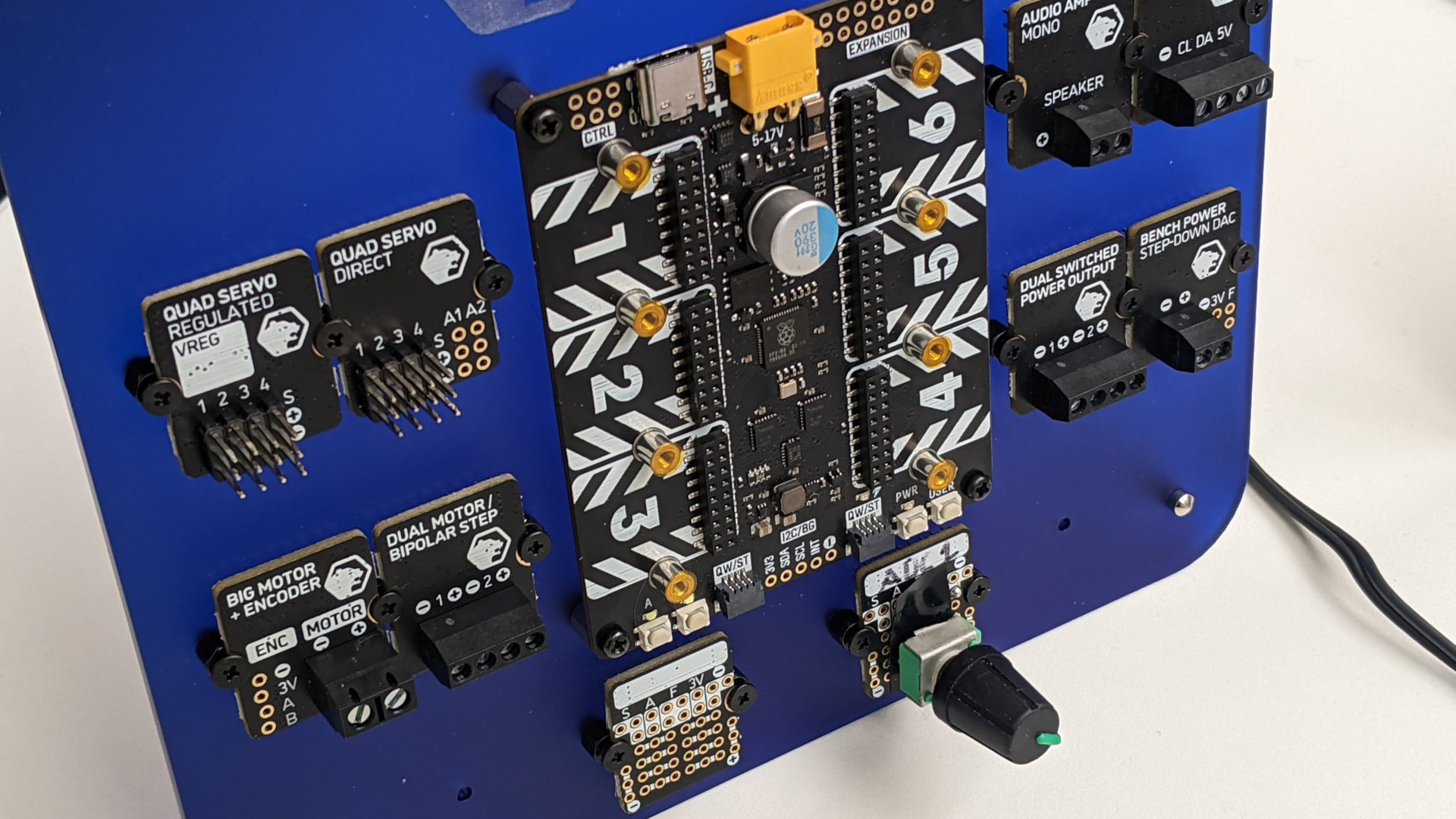
Pimoroni Stealthily Announce RP2040 Yukon Modular Robotics Platform
Receiving its “world premiere” at Cambridge Raspberry Jam, Pimoroni’s latest robotics focused board was announced with an element of stealth. Pimoroni Yukon is a modular robotics platform powered by the Raspberry Pi Pico‘s RP2040 SoC and it could be a strong contender for our best RP2040 boards list.
Many thanks to Mark Mellors for the tip.
| SoC | RP2040 Arm Cortex M0+ Dual Core at 133 MHz with 264KB of RAM, 2MB Flash storage. |
| Connections | 6 x Module Slots |
| Row 2 – Cell 0 | Expansion header |
| Row 3 – Cell 0 | 2 x QW/ST (Stemma QT / Qwiic) Connectors |
| Row 4 – Cell 0 | I2C / Breakout Garden Header |
| Inputs | 3 x User buttons (A,B and USER) |
| Row 6 – Cell 0 | Power Button |
| Power | USB C (Data and Power) |
| Row 8 – Cell 0 | XT60 5-17V |
Yukon, is a modular platform with six connection points for a series of interchangeable add-on boards. The add-ons are connected using header pins, and are firmly screwed down to prevent vibrations from shaking them loose during a vigorous robot battle. In the center of the board is the RP2040 SoC, as used in the Raspberry Pi Pico and the Pico W, but we cannot see any Wi-Fi chips, perhaps they are on the rear of the board?
The modules on display are an interesting bunch. With servo connections, motor controllers, encoders and audio amp. All of the modules can be easily swapped out, to make your own mechanical contraption, light-up display or audio project.
Currently Known Modules
- Quad Servo (Regulated)
- Quad Servo (Direct)
- Big Motor and Encoder
- Dual Motor / Biploar Stepper Motor Controller
- Audio Amp (Mono)
- LED Strip (APA102?)
- Dual Switched Power Output
- Bench Power Step-Down DAC
If you need something which has yet to be made into a module, then Pimoroni has you covered. Blank prototype boards are ready for you to solder your own components into a module. You’ll need the best soldering iron in order to make your own modules, but it won’t take too much work.
The interchangeable nature of Yukon is an interesting premise. By swapping the modules we can tailor it to meet our needs. Strongly influenced by robotics (the XT60 power connector is a dead giveaway) there are multiple controllers for servos and motors. But Yukon is not a one-trick pony. The inclusion of an audio amp and RGB LED strip (which I assume is for an APA102 LED strip given the pinout) means that props or animatronics with sound and light could be easily created. It is great to see USB C being used for data and power. USB C is a robust connection, much stronger than micro USB and almost fool-proof when attaching a cable.
When can we expect Yukon and how much will it be? Well for now those details remain largely unknown. Pimoroni’s Product Engineer, Dr Chris Parrott indicates that it could be months away. But “Yukon” bet that we’ll be getting one in for review, just as soon as we can.


